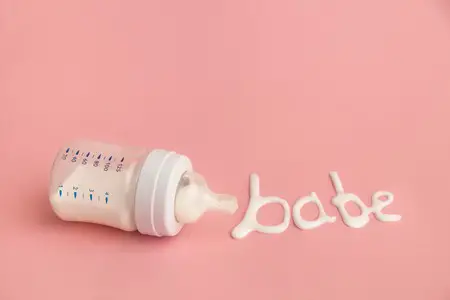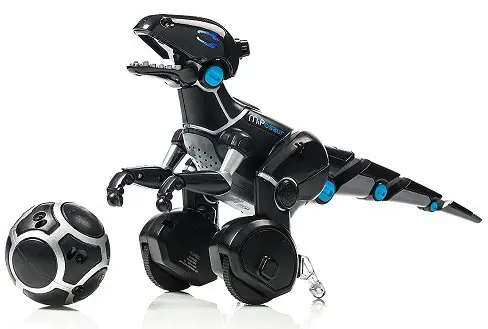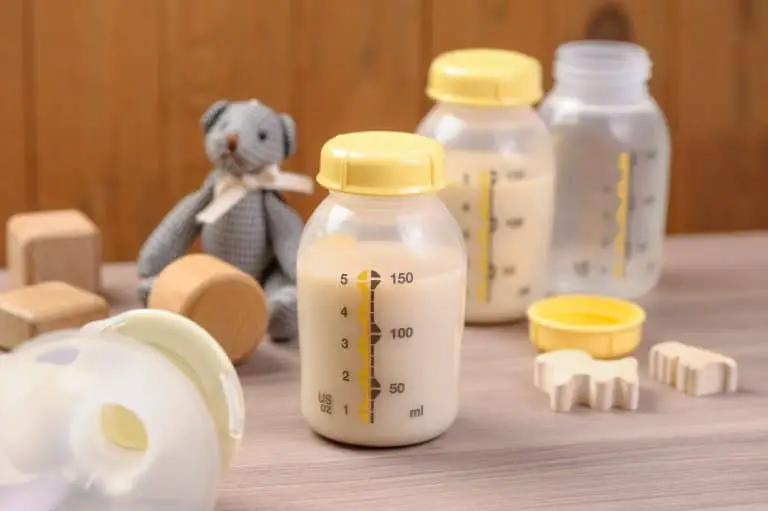When to Change Nipple Flow – Everything You Need to Know
Is your baby showing signs of frustration or disinterest with the bottle? Are you tired of leaking bottles with excessive flow rates or bottles that barely let the milk enter into your baby’s mouth due to an intense slow flow rate? Do nipple sizes and their flow rates confuse you and make you indecisive when it comes to picking the right one? Are you facing more issues similar to these?
If yes, then it’s time for you to sit back and read this blog. We are about to reveal everything you should know about slow flow bottle nipples and when to change their flow. Allow your baby’s tummy to grow with proper nourishment, with neither excessive intake nor scarce ingestion.
Nipples & Why use a Slow Flow Nipple?
The stomach of children during babyhood is the most fragile and vulnerable organ. The baby needs to be fed slowly and sufficiently; for the mouth to deliver the right dose of nourishment to the rest of the body. For that, Nipples made of silicone or latex are used on top of the bottle. The babies suck on these nipples to take in the milk from the bottle, slowly through a single hole or a few ones. The number and size of these holes lead to different flow rates. A slow flow nipple is the one with a small singular hole and a wide latch made up of softest silicone material. Single and a small hole-size of slow flow nipples, enable food to flow at adequate speeds and consistently, making them perfect for newborns or preemies.
It is very important for parents to understand the relationship between a nipple’s flow level and the age of the baby. Following is a chart that can help you understand the gist of it.
| Nipple Flow Level | Age
|
| First flow or Preemie flow | Newborns & Preemies |
| Level 1 | 0 months+ |
| Level 2 | 3 months+ |
| Level 3 | 6 months+ |
| Level 4 | 9 months+ |
| Standard, Y-cut | 9 months+ |
Young babies like newborn and preemies are recommended to use slow flows/first flows to avoid
- Gas & spit-up issues
- Colic issues
- The strain on baby’s sucking reflex and their diet
As babies grow old, their nipple flow-rate must update. A slow flow nipple can frustrate older babies. They will have to work too hard just to get the milk they want. This can be strenuous to their young age. Slow flow nipples are only intended for newborn babies or preemies and standard fast flow nipples are designed for babies above 1 year. The flow rate must gradually increase with the growth of babies. But then, how exactly do we know when is the perfect moment to upgrade it?
Signs Which Indicate It’s Time to Change the Nipple Flow?
It’s not always the age or a number of months that tells you it’s time to change the nipple flow rate. It can happen between weeks, even days when your baby starts to show non-verbal cues, asking for a change. Here are the signs which indicate that it’s time to switch the nipple flow.
- It’s taking more than 30 minutes:
Bottle-feeding should take 30 minutes. But if your baby is not getting the milk they want, they will suck harder and longer. When you see such a scenario, you know it’s time to change the nipple slow flow to medium standard flow.
- Choking or Coughing spit-ups:
If your baby is coughing while spitting up milk or choking on it, you know it’s time to switch nipple flow to slow flow.
- Gas & Colic Issues:
If your baby starts to experience gas or colic issues, immediately switch to a slower nipple flow with vents that prevent colic.
- Hungry Baby:
If your baby does not finish the first bottle and then gets hungry, repeats the process frequently, you must understand they are asking for a change in nipple flow. Please consider upgrading the level of nipple flow to medium standard.
- Sucking too hard:
If you see your baby sucking the bottle nipple too hard, it means they are struggling to get the milk out inconsistency or in the right amount. If you see this happening frequently, consider switching to a medium standard flow. If your baby is already 1 year old, you can consider fast flows.
- Frustration with the bottle:
When your baby starts to dislike the bottle and show frustration signs with it like hitting the bottle at some time during sucking too hard, crying, flattening the nipple, or doing weird things with it, you need to understand their non-verbal clues for a change. Please consider providing them with a medium-to-fast nipple flow. They really need a better quality nipple.
Understanding when to move to better nipple flows is a very important and somewhat confusing stage to realize. But all you need to do is, observe the baby closely and their behavior towards the bottle, food and the feeding time. The feeding time should be happy, interesting and nourishing for your baby and you must see these three things (i.e. happiness, interest and a feeling of getting nourished) on their face and expressions. Babies can only communicate through nonverbal cues and through facial expressions. As a parent, you must take a break from the racing mad crowd, breathe deeply and give your baby a sufficient time of consideration and reflection. A human’s comfort and healthy growth must be taken seriously and especially during their babyhood to childhood stages.

What If I Am Unsure Even After Observing Signs
If you observe your baby giving clues for a change and voting for faster flows, you can try some easy tests. Take for example the needle test. When you see your baby acting frustrated with the bottle showing all kinds of signs but you are still unsure whether to invest in a next high-quality medium flow bottle nipple or not, maybe because you think your baby is still not eligible for advanced level flow, you can try widening the nipple’s hole yourself and test your baby’s behavior towards it.
Take a sterilized needle and widen the nipple’s hole only a little. Feed your baby with that and if you observe any changes in your baby’s behavior towards the bottle, you know it’s a success. You can let your baby use that nipple if you think your baby is still too young to have a medium flow nipple and doesn’t need an upgrade. However, if you see your baby trying to suck hard on the widened nipple again, try to widen the nipple a little more with a sterilized needle. If that signals success and improves the interest of your baby in the bottle, then you immediately need to get a new nipple with upgraded flow-rate.
Please note that such tests must be done with great precaution and care. Widening a nipple’s hole can increase the risk of nipple breaking off during feeding so please consider the material’s capacity to withstand when intending to perform tests. Also, consider testing only when you observe serious signs and consider replacing bottle nipples immediately after seeing positive needle test results.
Another safe and recommendable way to ensure nipple flow up-gradation is to provide your baby with a disposable medium standard flow nipple. Disposable ones are cheaper in price but must be good in quality. You can test your baby’s nipple flow needs with disposable nipples of various flow levels.
Tips to better Bottle-Feed Your Baby
The baby will let you know how exactly you should be feeding them, so just relax and observe their behavior and actions to get better at looking after them. From the feeding-position to the time your baby takes for a complete feeding, they will express completely through their behavior. Here are some great tips to get to know those little signs and how exactly you should be responding to that.
Be Committed to the Feeding Routine
Babies are the calmest when it comes to their feeding time. So make sure to put everything aside and enjoy their comfort as much as you can. It is here you will learn the most of what your baby likes and how they react. Use this opportunity and this peace to bond with your little one.
Temperature of the Milk
Just as we love and enjoy our food at the perfect temperature, it is precisely the same for your little one. Most babies love their milk at a comfortably warm temperature. So before you lead the bottle towards the baby’s lips, make sure to check the temperature by using your palm or the inside of your wrist. If it feels just right, the milk is good to go.
Developing the Baby’s Interest
It is not always the flow-rate that makes the baby lose interest in feeding. Remember that their vision is developing rapidly and that makes them want to look at all the exciting things around them. Make sure to limit the stimulating elements so that your baby can completely focus on feeding
Condition of the Nipple
If your baby is used to the rate of milk flow but is still having a hard time during feeding, it might be that the nipple has been spoiled. Look for signs, if your baby faces difficulty latching on to the nipple, or faces difficulty in sucking, the nipple definitely needs to be replaced.
Your Position while Feeding the Baby
It can get quite uncomfortable for you to stay in the same position during feeding and your arms can get numb. The average time the baby needs to be well-fed is around 20 to 30 minutes with the head tilted to 45 degrees so they don’t swallow a lot of air. Hence, make sure to make yourself comfortable before beginning the feeding, so the feeding continues peacefully and uninterrupted.
What Do I Do When My Baby Seems Stuck Between Two Levels?
Parenting never runs out of new challenges, there is always something unpredictably confusing that is ready to move you. But patience and mindfulness are the keys. Some babies manage to get stuck somewhere between two levels of nipple flow. None of the nipple flow level comforts them which can be pretty much frustrating to observe. But again, patience and mindfulness are the keys. If you discover that size 1 nipples are too slow and are elongating feeding time more than 30 minutes while size 2 nipples overwhelm and cause much of dribbling that your baby barely manages to take in a drop; you may lose your calm.
But fortunately, there are several customized options that you can pick by exploring a little more of the market. Finding ideal nipple flow when your baby is stuck between two levels can make you frown but it’s not really that difficult if you spare some time to explore markets a little more deeply. The world has made everything available in customized versions so don’t worry, you will get your perfect version of bottle nipple too.
Conclusion
Transitioning from breastfeeding to bottle-feeding to spoon-feeding is not free of challenges. Adjusting to every such stage takes time, commitment and care. These things may sound too much or overwhelming but rest assured, they are not. Just be patient, observing and considerate with your baby and when you notice something worth working on, be mindful to make a new choice.
Similarly whenever you feel like, this is the moment when I need to change the bottle nipple’s flow level for my baby, go ahead and explore markets to find out the perfect version, even customized if you want. There are numerous popular and good brands which offer such versions, after all it’s the babies who need the most care, time and consideration. Other age groups can worry for themselves but babies? They rely on your choice. So make their babyhood worth it with happy feeding and healthy nourishment.




